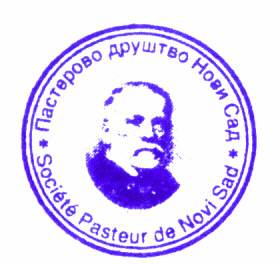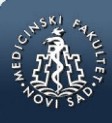md-medicaldata
Main menu:
- Naslovna/Home
- Arhiva/Archive
- Godina 2024, Broj 1
- Godina 2023, Broj 3
- Godina 2023, Broj 1-2
- Godina 2022, Broj 3
- Godina 2022, Broj 1-2
- Godina 2021, Broj 3-4
- Godina 2021, Broj 2
- Godina 2021, Broj 1
- Godina 2020, Broj 4
- Godina 2020, Broj 3
- Godina 2020, Broj 2
- Godina 2020, Broj 1
- Godina 2019, Broj 3
- Godina 2019, Broj 2
- Godina 2019, Broj 1
- Godina 2018, Broj 4
- Godina 2018, Broj 3
- Godina 2018, Broj 2
- Godina 2018, Broj 1
- Godina 2017, Broj 4
- Godina 2017, Broj 3
- Godina 2017, Broj 2
- Godina 2017, Broj 1
- Godina 2016, Broj 4
- Godina 2016, Broj 3
- Godina 2016, Broj 2
- Godina 2016, Broj 1
- Godina 2015, Broj 4
- Godina 2015, Broj 3
- Godina 2015, Broj 2
- Godina 2015, Broj 1
- Godina 2014, Broj 4
- Godina 2014, Broj 3
- Godina 2014, Broj 2
- Godina 2014, Broj 1
- Godina 2013, Broj 4
- Godina 2013, Broj 3
- Godina 2013, Broj 2
- Godina 2013, Broj 1
- Godina 2012, Broj 4
- Godina 2012, Broj 3
- Godina 2012, Broj 2
- Godina 2012, Broj 1
- Godina 2011, Broj 4
- Godina 2011, Broj 3
- Godina 2011, Broj 2
- Godina 2011, Broj 1
- Godina 2010, Broj 4
- Godina 2010, Broj 3
- Godina 2010, Broj 2
- Godina 2010, Broj 1
- Godina 2009, Broj 4
- Godina 2009, Broj 3
- Godina 2009, Broj 2
- Godina 2009, Broj 1
- Supplement
- Galerija/Gallery
- Dešavanja/Events
- Uputstva/Instructions
- Redakcija/Redaction
- Izdavač/Publisher
- Pretplata /Subscriptions
- Saradnja/Cooperation
- Vesti/News
- Kontakt/Contact
 Pasterovo društvo
Pasterovo društvo
- Disclosure of Potential Conflicts of Interest
- WorldMedical Association Declaration of Helsinki Ethical Principles for Medical Research Involving Human Subjects
- Committee on publication Ethics
CIP - Каталогизација у публикацији
Народна библиотека Србије, Београд
61
MD : Medical Data : medicinska revija = medical review / glavni i odgovorni urednik Dušan Lalošević. - Vol. 1, no. 1 (2009)- . - Zemun : Udruženje za kulturu povezivanja Most Art Jugoslavija ; Novi Sad : Pasterovo društvo, 2009- (Beograd : Scripta Internacional). - 30 cm
Dostupno i na: http://www.md-medicaldata.com. - Tri puta godišnje.
ISSN 1821-1585 = MD. Medical Data
COBISS.SR-ID 158558988
ULOGA LOGOPEDA U PREVENCIJI I TRETMANU PSEUDOTUMORA GLASNICA
/
THE ROLE OF THE SPEECH THERAPIST IN THE PREVENTION AND TREATMENT OF PSEUDOTUMORS OF THE VOCAL CORDS.
Authors
Jovana Radović1, Mila Veselinović1,2
1Univerzitet u Novom Sadu, Medicinski fakultet, Katedra za Specijalnu edukaciju i rehabilitaciju, Hajduk Veljkova 1, 21000 Novi Sad, Srbija
2Klinika za otorinolaringologiju i hirurgiju glave i vrata, Klinički centar Vojvodine, Novi Sad
UDK: 616.225-006-08
376.36:616
The paper was received / Rad primljen: 08.11.2021.
Accepted / Rad prihvaćen: 10.12.2021.
Correspondence to:
Jovana Radović
Medicinski fakultet Univerziteta u Novom Sadu
Hajduk Veljkova 1, 21000 Novi Sad, Srbija
Telefon: +381649307285
e-mail: jradovic578@gmail.com
Sažetak
Pseudotumori larinksa su benigne lezije vokalnih nabora koji nastaju najčešće usled vokalne zloupotrebe i pogrešne upotrebe glasa, kao i pušenja, pojave gastroezofagealnog refluksa, loših klimatskih uslova i mnogih drugih faktora. Klasifikuju se kao nodulusi, polipi, Rajnkeovi edemi i ciste, čiji je oblik lečenja najčešće hirurški, osim za noduluse, gde logopedski tretman poslednjih godina uzima primat nad operacionim. Iako logopedski tretman, sam po sebi, nije dovoljno efikasan, te mora da se kombinuje sa drugim metodama lečenja, njegova važnost je velika, kako u uspostavljanju pravilnih obrazaca fonacije, tako i u prevenciji, kroz obučavanje pacijenata osnovnim principima vokalne higijene.
Ključne riječi
benigne lezije, larinks, hirurški tretman, logopedski tretman, vokalna higijena
Abstract
Pseudotumors of the larynx are benign lesions of the vocal folds that occur most often due to vocal abuse and misuse, as well as smoking, gastroesophageal reflux, poor climatic conditions and many other factors. They are classified as nodules, polyps, Reinke's edema and cysts, whose form of treatment is most often surgical, except for nodules where speech therapy has taken precedence over surgery in recent years. Although speech therapy itself is not effective enough and must be combined with other treatment methods, its importance is great, both in establishing the correct patterns of phonation, and in prevention, by training patients in the basic principles of vocal hygiene.
Key words:
benign lesions, larynx, surgical treatment, speech therapy, vocal hygiene
References:
- Boltežar L, Šereg Bahar M. Voice disorders in occupations with vocal load in Slovenia. Zdrav Var. 2014; 53(4):304-10.
- Morrissey ML. Vocal health and the teaching profession: a case study. The Phenomenon of Singing 3. 2013; 3:147-54.
- Tanner M. Keeping your voice healthy: for people who sing. Anacrusis. 2016; 34:51-3.
- Jović RM, Mumović GM, Mitrović SM, Golubović S. Medicinske osnove poremećaja glasa i govora. Novi Sad: Medicinski fakultet; 2014.
- Ghassemi M, Syed Z, Mehta DD, Van Stan JH, Hillman RE, Guttag JV. Uncovering voice misuse using symbolic mismatch. Machine Learning for Healthcare Conference. 2016; 56:239-52.
- DeVore K, Cookman S. The voice book: caring for, protecting, and improving your voice. 1st ed. Chicago: Chicago Review Press; 2009.
- Martins RHG, Ribeiro CBH, de Mello BMZF, Branco A, Tavares ELM. Dysphonia in children. J Voice. 2012; 26(5):674.e17-674.e20.
- Cipriani NA, Martin DE, Corey JP, Portugal L, Caballero N, Lester R, et al. The clinicopathologic spectrum of benign mass lesions of the vocal fold due to vocal abuse. Int J Surg Pathol. 2011; 19(5):583-7.
- Nunes RB, Behlau M, Nunes MB, Paulino JG. Clinical diagnosis and histological analysis of vocal nodules and polyps. Braz J Otorhinolaryngol. 2013; 79(4):434-40.
- Abeida MEU, Liesa RF, Varela HV, Campayo JG, Gormedino PR, Garcia AO. Study of the influence of psychological factors in the etiology of vocal nodules in women. J Voice. 2013; 27(1):129.e15-129.e20.
- Won SJ, Kim RB, Kim JP, Park JJ, Kwon MS, Woo SH. The prevalence and factors associate with vocal nodules in general population: cross-sectional epidemiological study. Medicine. 2016; 95(39):e4971.
- Boone DR, McFarlane SC, Von Berg SL, Zraick RI. The voice and voice therapy. 9thed. New Jersey: Pearson Education; 2013.
- D'Alatri L, Petrelli L, Calò L, Picciotti PM, Marchese MR, Bussu F. Vocal fold nodules in school age children: attention deficit hyperactivity disorder as a potential risk factor. J Voice. 2015; 29(3):287-91.
- Coelho JDS, Moreti F, Pacheco C, Behlau M. Self-perception of voice symptoms and vocal health and hygiene knowledge in popular and classical singers. Codas. 2020; 32(3):e20180304.
- Hassan WA. Laryngeal polyp associated with reflux disease: a case report. J Med Case Rep. 2020; 14(1):2.
- Akbari E, Seifpanahi S, Ghorbani A, Izadi F, Torabinezhad F. The effects of size and type of vocal fold polyp on some acoustic voice parameters. Iran J Med Sci. 2018; 43(2):158-63.
- Everaert JC, Romak JJ, Sataloff RT. Reinke edema. Ear Nose Throat J. 2018; 97(3):E49-E50.
- Sreedharan R, Chhabada S, Khanna S. Reinke's edema: implications for airway management. Anesthesiology. 2018; 129(4):810.
- Ura-Sabat K, Morawska J, Domka W, Gamrot-Wrzoł M, Scierski W, Niebudek-Bogusz E. The assessment of phonatory and ventilatory functions in patients after microsurgery for Reinke's edema. Adv Clin Exp Med. 2020; 29(7):865-71.
- Catanoso L, Evarts M, Sataloff RT. Posterior vocal fold cysts. Ear Nose Throat J. 2019; 98(10):629.
- Oliveira RCCD, Gama ACC, Genilhú PFL, Santos MAR. High speed digital videolaringoscopy: evaluation of vocal nodules and cysts in women. Codas. 2021; 33(3):e20200095.
- Fu S, Theodoros DG, Ward EC. Intensive versus traditional voice therapy for vocal nodules: perceptual, physiological, acoustic and aerodynamic changes. J Voice. 2015; 29(2):260.e31-260.e44.
- Bakat B, Gupta A, Roy A, Roychoudhury A, Raychaudhuri BK. Does voice therapy cure all vocal fold nodules?. Int J Phonosurg Laryngol. 2014; 4(2):55-9.
- Rodríguez-Parra MJ, Adrián JA, Casado JC. Comparing voice-therapy and vocal-hygiene treatments in dysphonia using a limited multidimensional evaluation protocol. J Commun Disord. 2011; 44(6):615-30.
- Lobo BPL, Madazio GMV, Badaró FAR, Behlau MS. Vocal risk in preachers: talkativeness, vocal loudness, and knowledge about vocal health and hygiene. Codas. 2018; 30(2):e20170089.
- Stemple JC, Hapner ER. Voice therapy: clinical case studies. 4th ed. Plural Publishing. San Diego; 2014.
- Pizolato RA, Rehder MIBC, dos Santos Dias CT, de Castro Meneghim M, Ambrosano GMB, Mialhe FL, et al. Evaluation of the effectiveness of a voice training program for teachers. J Voice. 2013; 27(5):603-10.
- Meerschman I, D'haeseleer E, Catry T, Ruigrok B, Claeys S, Van Lierde K. Effect of two isolated vocal facilitating techniques glottal fry and yawn-sigh on the phonation of female speech-language pathology students: a pilot study. J Commun Disord. 2017; 66:40-50.
- Mumović GM, Mitrović SM, Jović RM. Praktikum iz medicinskih osnova poremećaja glasa i govora. Novi Sad: Medicinski fakultet;2014.
- Ghassemi M, Van Stan JH, Mehta DD, Zañartu M, Cheyne II HA, Hillman RE, et al. Learning to detect vocal hyperfunction form ambulatory neck-surface acceleration features: initial results for vocal fold nodules. IEEE Trans Biomed Eng. 2014; 61(6):1668-75.
- Fuentes-López E, Fuente A, Contreras KV. Inadequate vocal hygiene habits associated with the presence of self-reported voice symptoms in telemarketers. Logop Phoniatr Voco. 2019; 44(3):105-14.
- Roza AP, Gielow I, Vaiano T, Behlau M. Development and application of a vocal health and hygiene game in adults. Codas. 2019; 31(4):e20180184.
- Van Houtte E, Claeys S, Wuyts F, Van Lierde K. The impact of voice disorders among teachers: vocal complaints, treatment-seeking behavior, knowledge of vocal care, and voice-related absenteeism. J Voice. 2011; 25(5):570-5.
- Ferreira LP, de Oliveira Latorre MRD, Giannini SPP, de Assis Moura Ghirardi AC, e Karmann DDF, Silva EE, et al. Influence of abusive vocal habits, hydration, mastication, and sleep in the occurrence of vocal symptoms in teachers. J Voice. 2010; 24(1):86-92.
- Sivasankar M, Leydon C. The role of hydration in vocal fold physiology. Curr Opin Otolaryngol Head Neck Surg. 2010; 18(3):171-5.
PDF: 07-MD-Vol 13 No 3-4 Sept-Dec 2021_Radovic and Veselinovic.pdf
 Medicinski fakultet
Medicinski fakultet